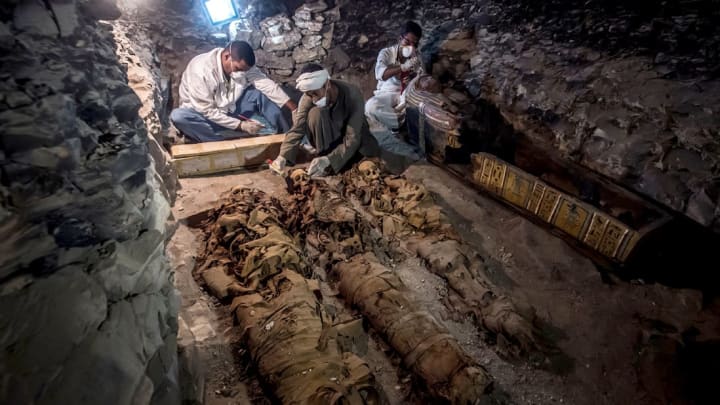Egyptian archaeologists have discovered the 3500-year-old tomb of a royal goldsmith. His name was Amenemhat, and his tomb was found in Draa Abul-Naga, a necropolis for elites and rulers located near the Valley of the Kings, in the southern Egyptian province of Luxor.
Amenemhat lived sometime during the 18th Dynasty (16th–14th century BCE). His tomb was dedicated to the god Amun-Re. It took archaeologists five months of digging to find a burial shaft leading to a chamber where they discovered a sarcophagus, mummies, and about 150 funerary statues and masks. Statues of Amenemhat and his wife, wearing a wig and a long dress, sat side by side in the chamber; a smaller statue of one of their sons rested between them, The New York Times reports.

More mummies, partially unwrapped, were discovered in a burial shaft. "We are not sure if these mummies belong to Amenemhat and his family," lead archaeologist Mostafa Waziri told the Times. "Others have clearly reused this tomb and poked around in ancient times. That’s probably why their heads are uncovered."

Amenemhat's tomb is not the most important find ever made in a country well known for its vast archaeological riches, but it comes at a time when Egypt is still trying to recover from the years of internal strife, terrorism, and violence that have followed in the wake of the uprising of 2011, which culminated in the ouster of President Hosni Mubarak. Tourism—a huge driver of Egypt's economy—plummeted, though there are signs the industry has begun to recover.
Egypt's antiquities minister, Khaled el-Enany, said as much in a news conference held outside the tomb over the weekend. "This find is important for marketing," he noted. "This is exactly what Egypt needs."
See more images of the discovery below.



